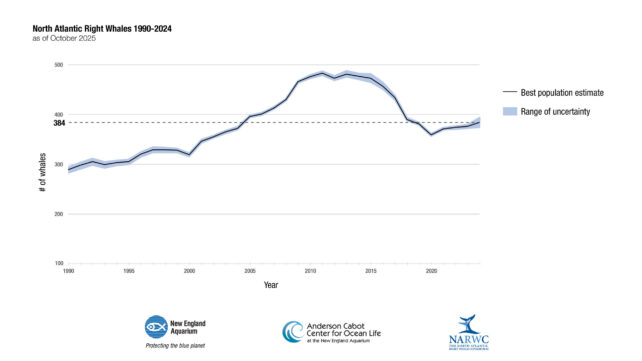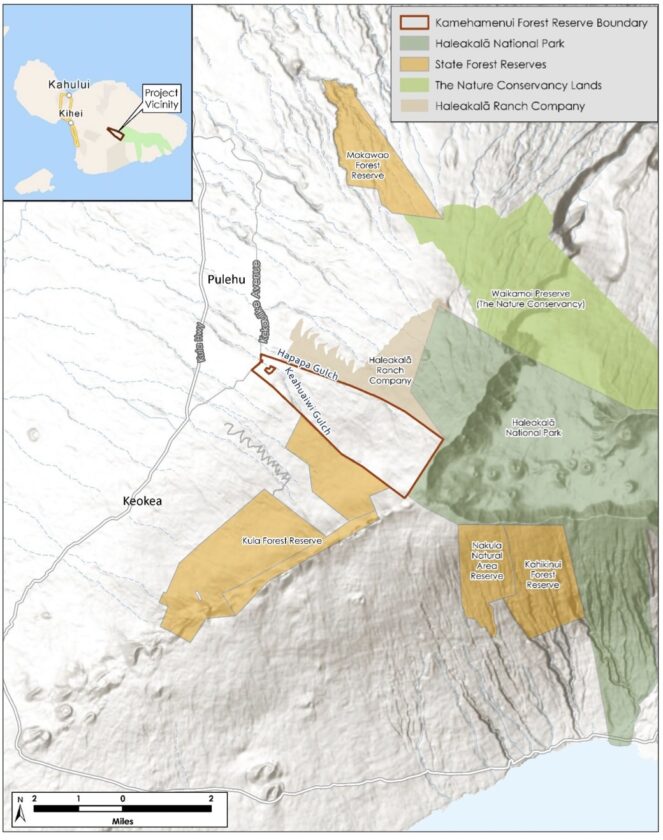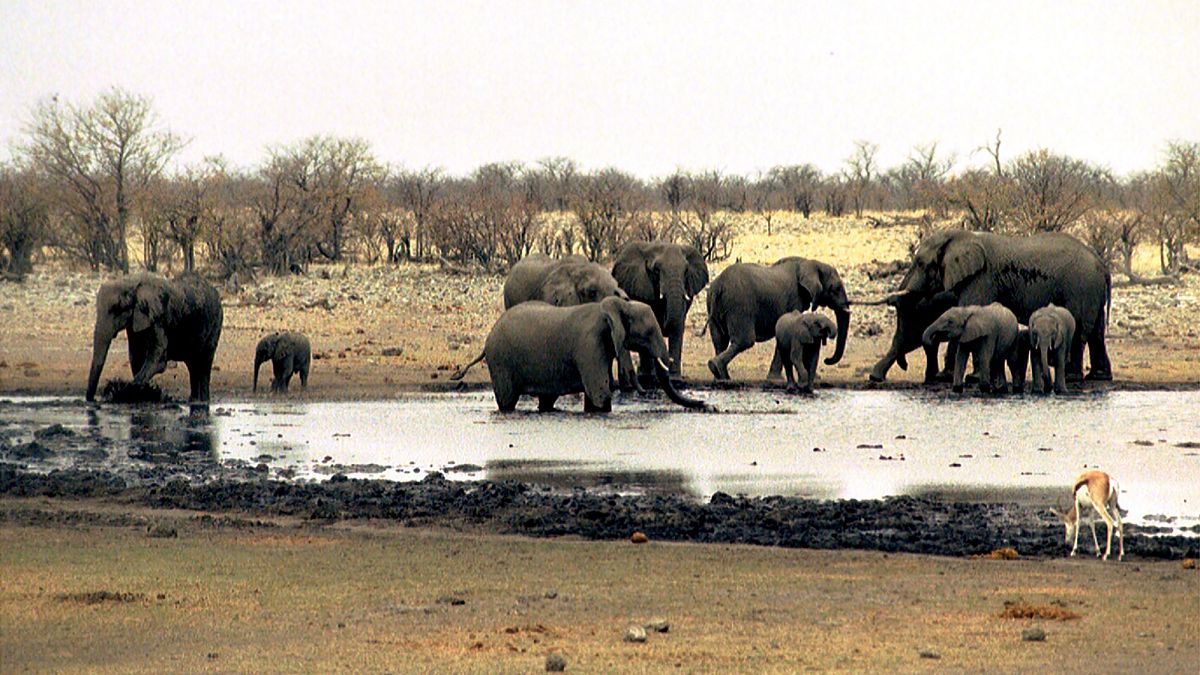Report on the Conservation Status of the North Atlantic Right Whale and Alignment with Sustainable Development Goals
Current Population Status and Trends
An assessment of the critically endangered North Atlantic right whale (Eubalaena glacialis) indicates a marginal population increase. Data from the North Atlantic Right Whale Consortium reveals a slow recovery trend, which is a positive development for marine biodiversity conservation efforts.
- 2024 Population Estimate: The total population is estimated at 384 individuals.
- Recent Growth: A population increase of just over 2 percent was recorded in 2024 compared to 2023, with the birth of 8 new calves.
- Post-2020 Trend: Since 2020, the population has grown by more than 7 percent.
- Historical Context: This recent growth follows a significant decline of approximately 25 percent during the preceding decade (2010-2020).
Heather Pettis of the New England Aquarium’s right whale research program expressed cautious optimism, noting the slight population increase, no detected mortalities in the current year, and fewer detected injuries. However, she emphasized that sustained conservation efforts are critical for the species’ long-term recovery.
Contribution to Sustainable Development Goal 14: Life Below Water
The conservation of the North Atlantic right whale is a direct contributor to the achievement of the United Nations’ Sustainable Development Goal 14 (Life Below Water). Protecting this keystone species is integral to maintaining marine biodiversity and the health of ocean ecosystems, directly aligning with Target 14.2, which aims to sustainably manage and protect marine and coastal ecosystems to avoid significant adverse impacts.
Primary Threats and Challenges to SDG Targets
Despite recent positive signs, significant anthropogenic threats persist, undermining progress towards SDG 14. These threats directly challenge the goal of conserving marine life and reducing the human impact on ocean environments.
- Vessel Collisions: Strikes from ships remain a primary cause of injury and mortality.
- Fishing Gear Entanglement: This is the most significant threat to the species. Data indicates that approximately 85 percent of the whales have been entangled at least once, with an estimated quarter of the population entangled annually in US and Canadian waters. This issue directly conflicts with SDG Target 14.4, which calls for an end to destructive fishing practices.
Philip Hamilton, a senior scientist at the New England Aquarium, noted the difficulty in detecting all entanglement events, suggesting the actual number may be higher.
Conservation Measures and Alignment with SDGs 12 and 17
A multi-faceted approach involving international cooperation is required to mitigate threats and ensure the species’ recovery. These measures align with several SDGs, including SDG 12 (Responsible Consumption and Production) and SDG 17 (Partnerships for the Goals).
- Implementation of Fishing-Free Zones: The establishment of temporary area closures to fishing reduces the risk of entanglement. This promotes sustainable resource management as outlined in SDG 12.
- Adoption of Ropeless Fishery Gear: Transitioning to innovative “whale-safe” fishing technologies is a key strategy to eliminate entanglement risk while allowing fishing activities to continue, supporting both conservation and sustainable livelihoods.
The collaborative efforts between research institutions like the New England Aquarium, government agencies such as NOAA, and non-profit organizations like Oceana exemplify the partnerships essential for achieving the goals, as highlighted in SDG 17.
Conclusion and Outlook
The slight increase in the North Atlantic right whale population is a fragile but encouraging sign. However, the road to recovery is long and contingent upon the effective and widespread implementation of conservation strategies. Sustained, collaborative action is imperative to address the severe threats of vessel strikes and fishing gear entanglement. The long-term survival of this species is a critical indicator of the global community’s commitment to achieving Sustainable Development Goal 14 and preserving life below water for future generations.
Analysis of Sustainable Development Goals in the Article
1. Which SDGs are addressed or connected to the issues highlighted in the article?
-
SDG 14: Life Below Water
This is the primary SDG addressed in the article. The entire text focuses on the conservation of a marine species, the North Atlantic right whale. It discusses the species’ critically endangered status, population recovery efforts, and the threats it faces from human activities in the ocean, such as fishing and vessel collisions. The goal aims to “conserve and sustainably use the oceans, seas and marine resources for sustainable development,” which is the central theme of the article.
2. What specific targets under those SDGs can be identified based on the article’s content?
-
Target 14.2: Protect and restore ecosystems
This target aims to “sustainably manage and protect marine and coastal ecosystems to avoid significant adverse impacts.” The article directly relates to this by describing the efforts to protect the North Atlantic right whale, a key species whose health is indicative of the broader marine ecosystem’s condition. The discussion of its population plummeting by 25% in the previous decade and the current “slow recovery” highlights the ongoing actions to manage and restore this species and its habitat.
-
Target 14.4: Sustainable fishing
This target seeks to “effectively regulate harvesting and end… destructive fishing practices.” The article explicitly identifies “entanglement in fishing gear” as a primary threat to the whales. It states that “each year, fishing gear entangles around a quarter of the North Atlantic right whale population” and “About 85 percent of the whales have been entangled at least once.” The mention of solutions like “temporary fishing-free zones” and “ropeless fishery gear” directly addresses the need to regulate fishing practices to make them more sustainable and less destructive to marine life.
-
Target 14.a: Increase scientific knowledge
This target focuses on increasing “scientific knowledge, develop research capacity and transfer marine technology… to improve ocean health.” The article is based on data and analysis from research organizations like the “North Atlantic Right Whale Consortium” and the “New England Aquarium.” The population estimates, growth rates, and injury assessments mentioned are all products of scientific research aimed at understanding and improving the health of this marine species.
3. Are there any indicators mentioned or implied in the article that can be used to measure progress towards the identified targets?
Yes, the article provides several quantitative and qualitative indicators that can be used to measure progress:
- Population Size and Growth Rate: The article provides specific numbers, stating the total population is an “estimated 384” and that it “increased by just over 2 percent compared to 2023.” This is a direct indicator of the success of conservation efforts under Target 14.2.
- Birth and Mortality Rates: The text mentions the birth of “8 new whale calves” and that there have been “no recorded deaths” so far this year. These are crucial indicators for assessing population viability and the effectiveness of protective measures (Target 14.2).
- Injury and Entanglement Rates: The article reports “fewer detected injuries than in the last several years” and provides statistics that “a quarter of the North Atlantic right whale population” is entangled annually. These figures serve as direct indicators of the impact of destructive fishing practices and the progress made in mitigating them (Target 14.4).
4. Summary Table of SDGs, Targets, and Indicators
| SDGs | Targets | Indicators |
|---|---|---|
| SDG 14: Life Below Water | 14.2: Protect and restore ecosystems. |
|
| SDG 14: Life Below Water | 14.4: Sustainable fishing. |
|
| SDG 14: Life Below Water | 14.a: Increase scientific knowledge. |
|
Source: sciencealert.com







